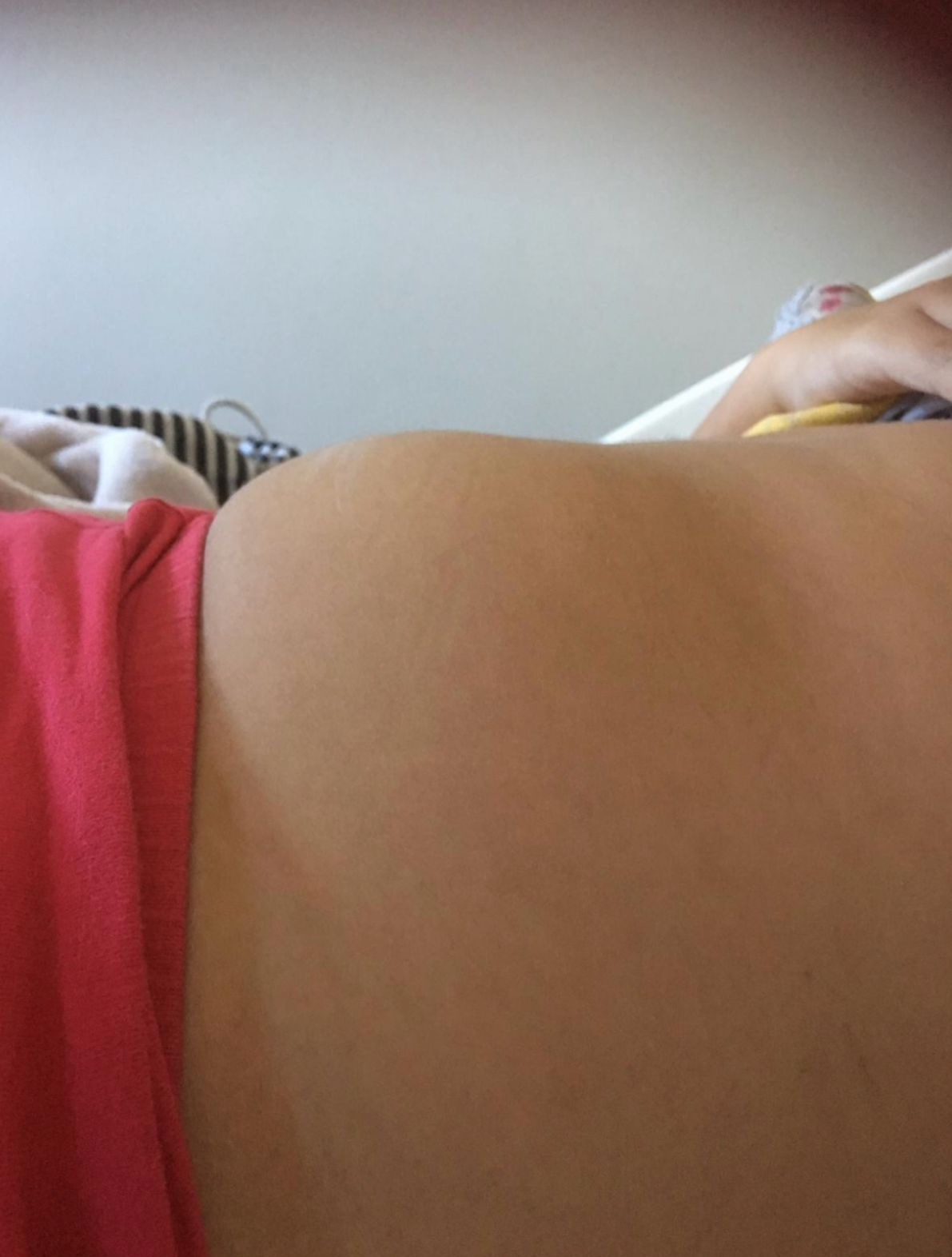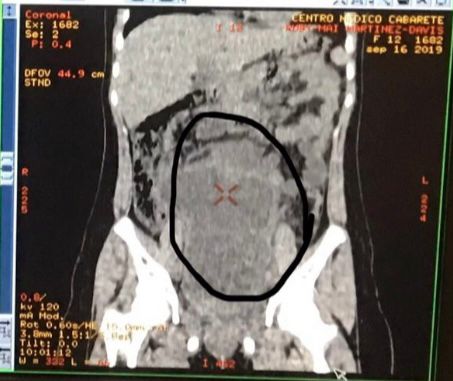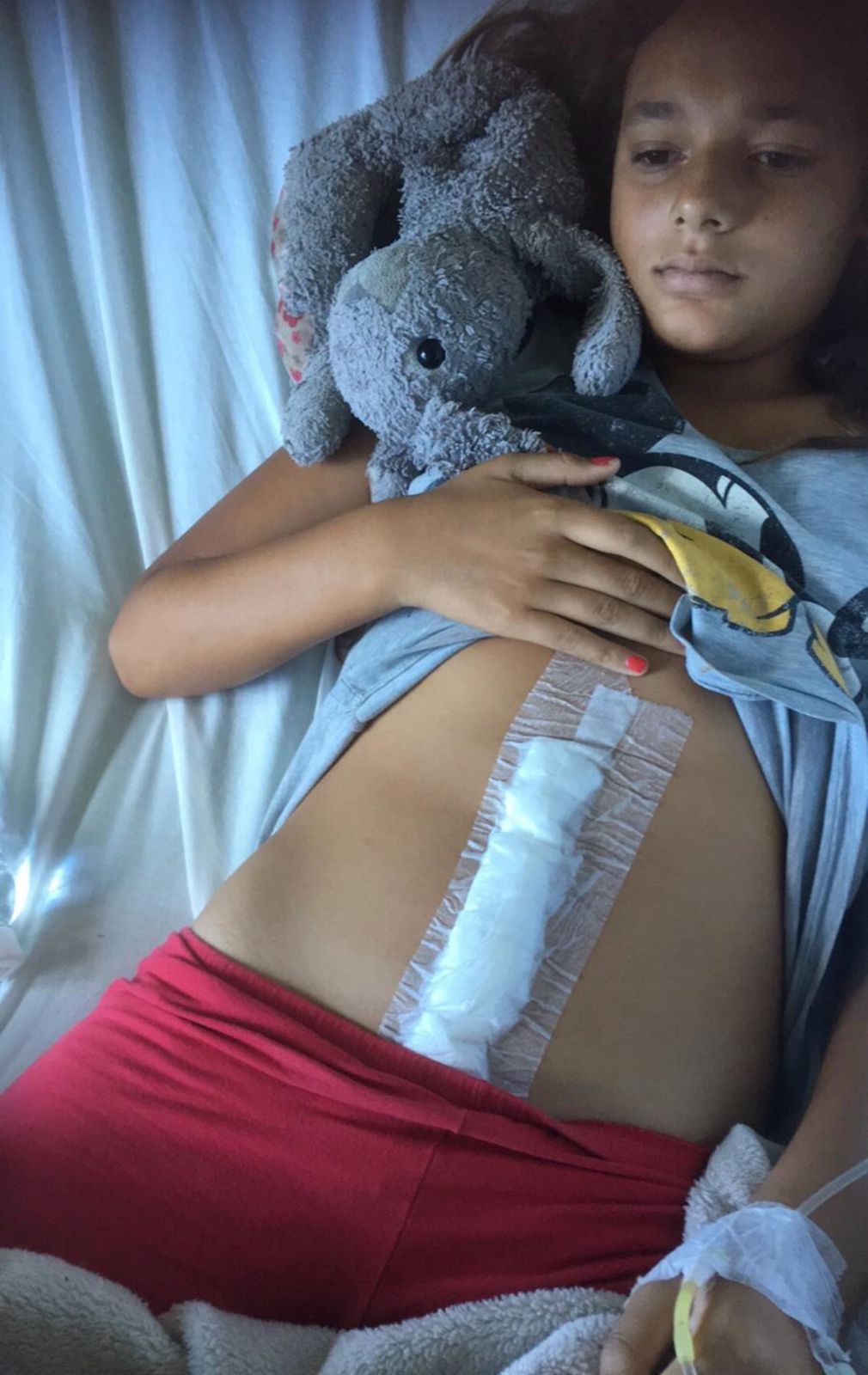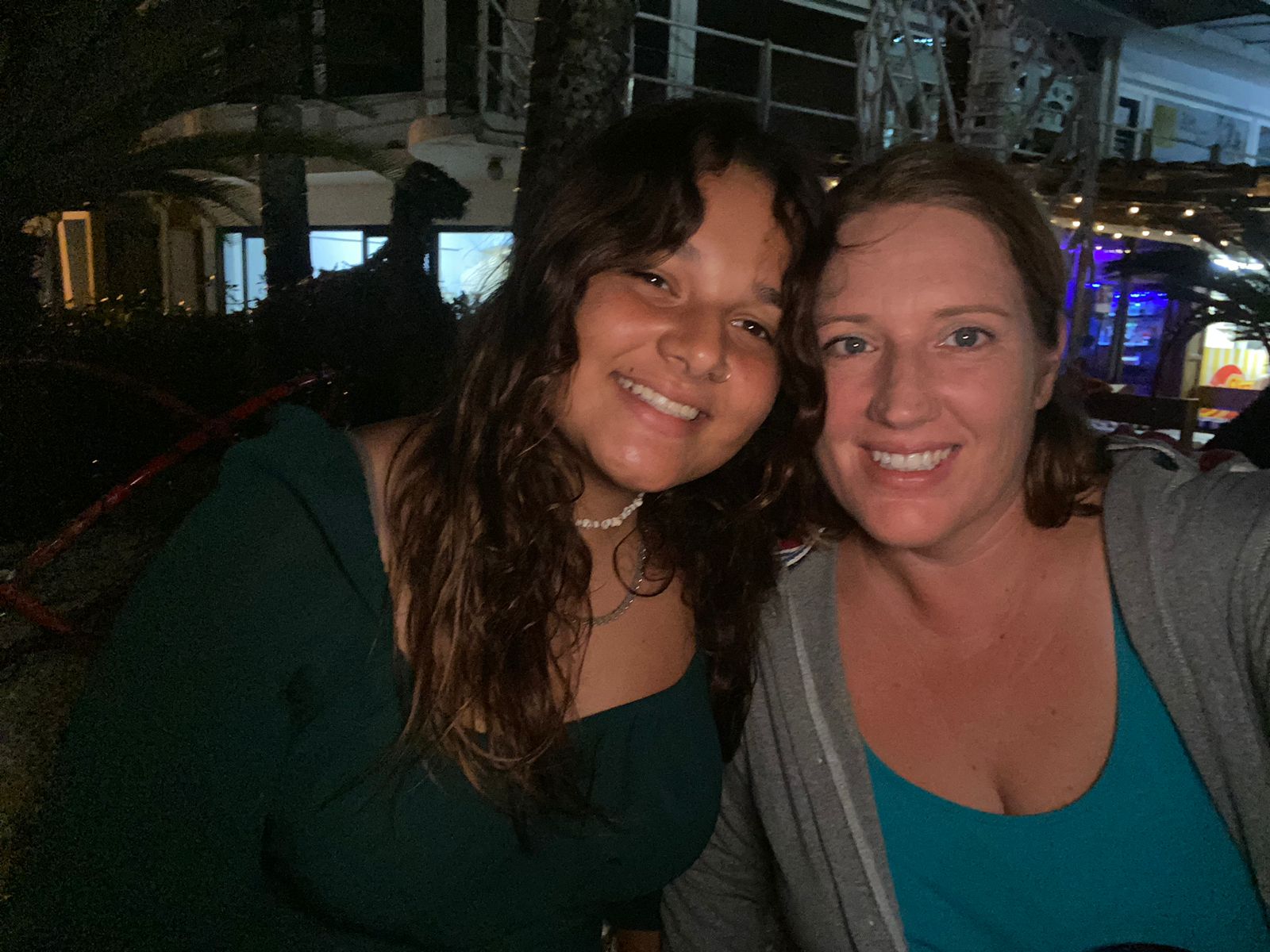It sounds like something out of a horror movie but for 12-year-old Ruby-Mae, the ‘monster’ growth was a terrifying reality.
Her mum Sarah Davis, 42, rushed her to Centro Medico Cabarete Hospital, Dominican Republic, when she complained of stomach pains.
The mum, who had moved from the UK, was concerned her little girl might be pregnant when doctors examined her ‘bloated’ tummy.
But a scan revealed that Ruby-Mae had a rare type of germ cell tumour called a teratoma – that can contain teeth, hair, and bone.
Teratomas are made up of tissue from all three germ layers – mesoderm, ectoderm, and endoderm – that occur during the formation of an embryo.
The unspecialised germ cells turn into different types of specialised cells such as hair, muscle and bone.
These tumours are usually discovered at birth, but Ruby-Mae’s had been growing undetected for years.
Doctors suspected the tumour had developed when she was in the womb, and luckily, it was non-cancerous.
But it had grown so large, it had caused her appendix to burst which can be life-threatening.
Ruby-Mae was rushed for surgery to remove the tumour that weighed in at 8lb – the same as newborn baby.
She recovered well from surgery and Sarah is hoping to raise awareness for other parents.
Sarah, a teacher, originally from Nottingham, UK, said: “It was so scary when I rushed her to hospital.
“I knew she wasn’t sexually active yet, but it did still cross my mind.
“When I looked at her bloated tummy in the hospital I said, ‘is there anything you want to tell me?’
“I just couldn’t believe she had a tumour all those years.
“We had absolutely no idea or warning about it.”
Ruby-Mae was a “perfectly healthy” child who had no symptoms leading up to the discovery.
When she was 12 years old, in September 2019, Ruby-Mae went to her mum complaining that her “tummy hurt”.
Sarah said: “She asked me, ‘Is this an appendicitis?’
“And I said that she would be in agony, so it’s not that.
“She had just started her period, so I thought it was linked to that.
“I gave her some pain relief and she seemed fine for the rest of the day.”
The following morning, Ruby-Mae woke-up complaining that the pain had returned and was much worse.
Feeling concerned, Sarah, who moved to the Dominican Republic six years ago, took her daughter to A&E to get things checked out.
During a scan, the nurse spotted some sort of mass, and Ruby-Mae was sent for a CAT scan on stomach.
It was then that doctors diagnosed her with the rare teratoma tumour that had likely been growing since she was in the womb.
What is a teratomas tumour?
Teratomas have been the subject of intense fascination among scientists because of their sometimes strange qualities – some have been reported to contain hair, teeth, bone and, very rarely, more complex organs such as eyeballs.
Thoughts about the origin of these tumours have attracted much debate.
“Teratoma” comes from the Greek word “teraton,” meaning “monster”. They are seen most commonly in children and young adults.
Teratomas are made up of tissue from all three germ layers – mesoderm, ectoderm, and endoderm – that occur during the formation of an embryo.
Although teratomas can occur during embryonic development, most arise much later in life.
Teratomas occur most often in the midline of the brain, therefore often obstructing and putting pressure on critical areas of the brain. This can lead to loss of basic functions, but this loss can be temporary — until the tumor is removed or reduced in size.
Teratomas are commonly very solid and rubbery making them resistant to dissection with standard instruments.
“There were about five or six doctors from different departments coming in to look,” Sarah said.
“As soon as you hear the word tumour you start to panic.
“But doctors assured us that this one wasn’t cancerous.”
Despite being benign, the sheer size of the tumour was causing internal damage to Ruby-Mae.
It had grown so large it was pressing on her appendix and caused it to rupture which can spread infection through the body and is potentially life-threatening.
The little girl was rushed to surgery, where they cut a vertical incision from her above her navel down her stomach.
Surgeons had to remove her appendix and the tumour – which weighed in at 8lb.
Sarah said: “It was a very scary, but she was so brave.
“We thought she would be in hospital for weeks, but she recovered very quickly.
“She was up walking 12 hours later, and able to go home after a couple days.”
Ruby-Mae, who is now 16 years old, has recovered well since surgery and didn’t need any further treatment.
Sarah said: “It’s so rare and unusual – I had never heard of it before.
“I do worry I should have taken her to hospital sooner – we have saved her appendix.
“But we went in just in time.
“I guess it’s always important to listen to your children, and trust your gut when something doesn’t seem right.”






